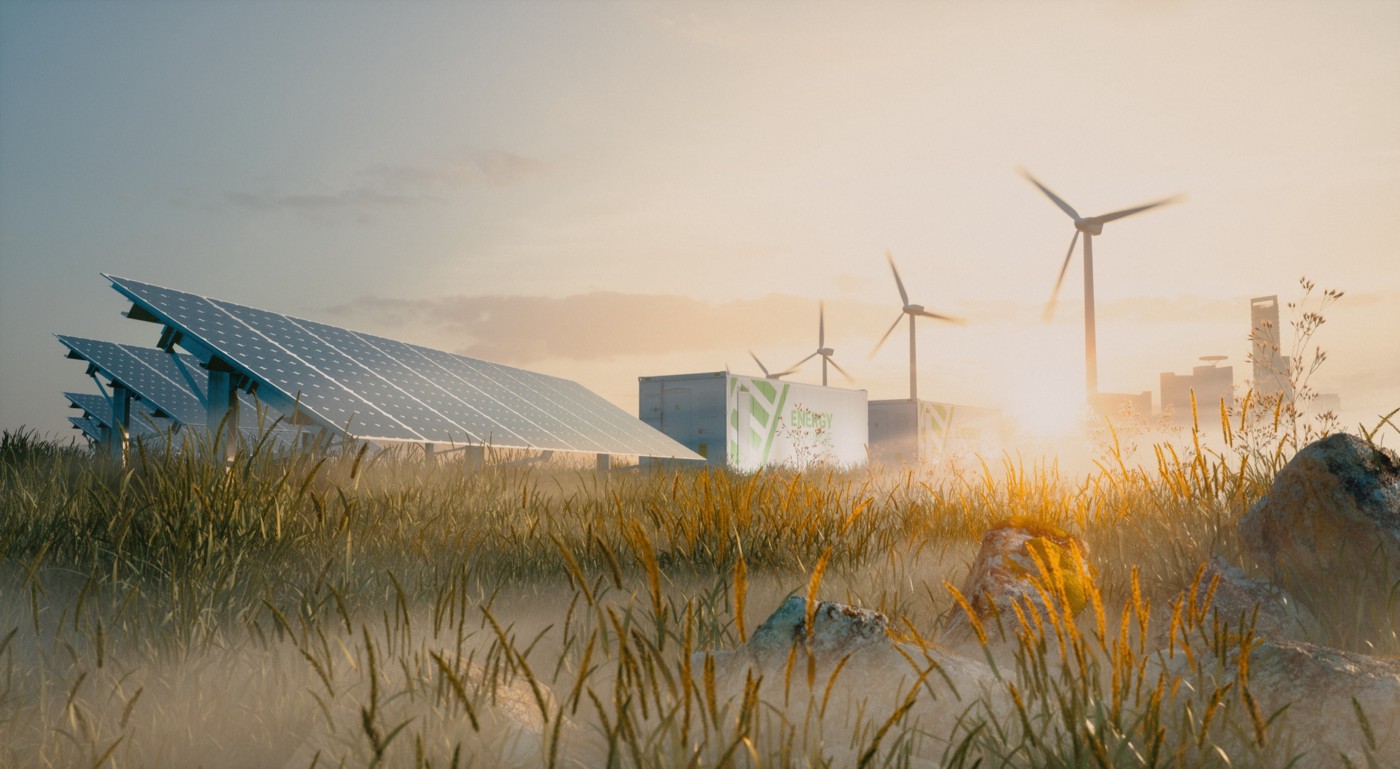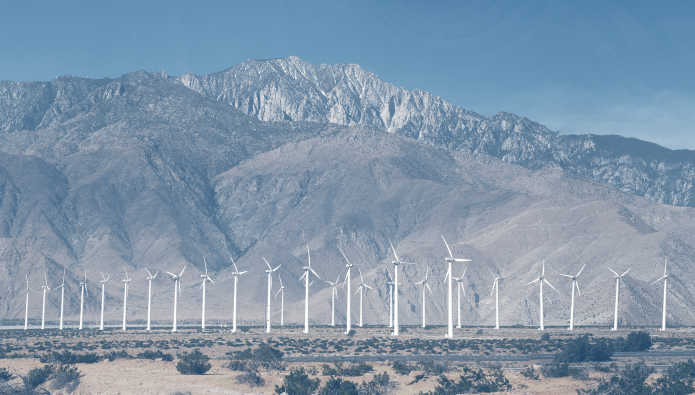In March 2022, Soluna Computing CEO John Belizaire attended the Solar and Wind Conference in Scottsdale, Arizona. Here are the outtakes from some of his conversations with other attendees.
Thank you, Andrew Rosenbaum, Saurabh Anand, and Tara Higgins for taking the time to chat.
Andrew Rosenbaum: Hi, my name is Andrew Rosenbaum. I’m a managing director with Truist Securities and I run the non-RAG power and renewable business for the firm.
Saurabh Anand: My name is Saurabh Anand and I’m managing director in our sustainable infrastructure practice at Denham Capital, where we make equity investments in growing businesses in renewable battery storage and related sustainable infrastructure segments.
Tara Higgins: I’m Tara Higgins, and I’m an M&A finance lawyer at Sidley Austin. I’ve worked in the renewables industry for over 20 years now, and do a lot of big projects like equity raises to smaller size development projects in solar and wind.
What’s it like being back to a live event?
Andrew Rosenbaum: It’s been two years and it’s absolutely fantastic. It’s great to be here. I think there’s a lot of pent-up demand and a lot of interest in getting back out here and seeing everybody. Webex and Zoom are sufficient to get the job done, but it’s not quite the same thing. And just the quality of the discussion over the last day and a half has been fantastic. So it’s great to be here.
Saurabh Anand: Just look around, there are more than 2000 people here and it’s really refreshing to have in-person interaction. After more than two years, it just makes things a lot easier. Despite the fact that we have gotten used to video conferencing, it’s not a substitute for getting together in person. It’s really productive to see a lot of old colleagues and make some new connections.
Give us your perspective on the macro review of the industry. If I were flying 30,000 feet up, how would you describe what’s happening right now?
Tara Higgins: I think there are constraints for renewables in a couple of ways. In terms of just grid reliability, you do need peaker plants, and gas-fired plants, you can’t just go all renewables all the time right away. You’re going to see that pivot, and it’s been slower than some people would like. Gas peaker, cut fire facilities, and facilities like that, are going to be part of the ecosystem. It’ll be interesting if nuclear makes its way back a bit. There’s a lot of reluctance for that, but it’s efficient as well. I think one of the biggest constraints for renewable power right now is things like transmission and battery storage. When somebody figures out true battery storage on a macro, grand scale, that’s going to be the game changer.
I think one challenge we have is the extent to which we get stuck in a cycle of four-year administrations, particularly if it’s different parties. I’m agnostic as to which party, but it’s very hard. By the time they get traction, they have an agenda, new people are coming in. That makes things like transmission or Department of Energy programs hard to get started because it’s a laborious task. It’s not just politics. Writing laws takes time, coming up with solutions takes time, and they have to bring a lot of people under the tent, and that’s hard if administrations change frequently.
It would be nice to have some continuity at the state and federal levels, for policy. Even if it’s not a perfect policy, at least you know what you’re working with. There are a lot of reasons why renewables get a lot of bipartisan support. Some of the states that benefit the most from renewable power are places like Texas and the Midwest. They have the best wind. It’s not necessarily the Northeast or California. A lot of people are outside that dialogue. I think most wind facilities are in Texas.
John Belizaire: No doubt. That’s where we’re spending a lot of our time.
Tara Higgins: It’s interesting. I think, in some respects, the general public, can think that renewables are a liberal agenda or something like that. It’s a big employer in a lot of states.
John Belizaire: It’s a question of economics, it’s another way to monetize and drive industry for the state.
Do you think the deployment of capital is going to accelerate in the coming years?
Tara Higgins: I think the deployment of capital is going to be the biggest challenge in finding utility-scale projects. The other thing, especially with the private equity clients we work with, they’re all looking for management teams, and they’re looking to buy developers. A lot of people have been bought or sold in the last five years. Competition for experienced talent, I think, is a challenge. Finding big enough deals to deploy. If you look at the KKRs, the Blackstones, and the I Squared, they have billions and billions to deploy.
You need large enough deals. I think what you’re going to see is a little bit more play with the venture/Silicon Valley world, we’re seeing that come in more. They are doing more early-stage deals, and venture deals.
What are the highlights of what’s happening in the energy industry right now?
Saurabh Anand: If you look at the overall trends, there is a trend towards decarbonization that has accelerated in the past few years, and we expect it’s going to continue to accelerate. The macro forces aren’t just driving it, now what’s driving it? There is more and more cost competitiveness of renewables 10 years ago or 13 years ago when we made our first solar investment, the cost of building solar was more than 10 times what it is today. So it’s an order of magnitude decline or more than that actually, over an orderly time period so now solar is the most competitive generation source in the majority of the markets.
Cost competitiveness has really driven the push toward renewable. There are of course renewable portfolio standards that drive up the demand, but both of them combined are getting to this point and now, as you look forward, energy security is going to be more and more of a focus we’d expect and that would further drive enables demand, but let’s not forget that renewables alone cannot power a system, which is where storage comes in with its own problems. It’s expensive today, so some folks would call where we are and the period an energy transition and it sure is because fossil fuels continue to be an important part of the energy mix and you could see them continue to be a part of the energy mix for a certain amount of time, before getting phased out so that’s the transition part and between now and then it is any and all sources with cost competitiveness, increasingly driving fossil fuel driven power generation off the grid.
How would you describe what’s changed in the space in the last two years?
Andrew Rosenbaum: I think the trend that we’re seeing right now that’s most substantial is that development is getting more capital-intensive. If you want to put a project in place, collateral for PPAs, interconnections, et cetera, is growing substantially. The time to get equipment and the amount of capital you need to put up front is growing tremendously. And that’s adding a lot of burden to the balance sheets of developers.
And I can’t say it’s specifically because of this, but I think it’s certainly adding to it is with that, we’re seeing a lot of what used to be, call it, build and flip developers that used to move product at NTP or shortly after that. A large trend for a lot of developers is partnering now with private equity to grow into an IPP, and retain assets. And with that embedded ballast from equity content and the cash flow stability and the operating portfolio, that gives them access to a lot more credit, and that credit can be used to help manage the working capital cycle, whether it be collateral posting or procuring equipment, which is just much harder to do without the balance sheet.
What do you think has driven increased momentum in the space?
Tara Higgins: I’ve been in the energy industry for a long time, and this is the first time I think you see a societal imperative. Previously, it was lobbying groups and focus groups and people in power in government, in DC, or in state government. This is interesting. I think it’s a generational change, societal and legislative imperatives. You just have to get on the bandwagon. If you don’t, you get left behind. It’s not a choice anymore.
John Belizaire: Amazing. There seems to be a lot of capital coming into this space as well.
What do you think is driving an influx of capital into the energy industry?
Tara Higgins: In a sense, the fundraising environment has been much easier the last few years, maybe even 10 years. A lot of liquidity has been in the market since the Greenspan days, tons of liquidity. Fundraising was pretty easy, the pension funds were looking for safe places, and there was a flight to infrastructure and energy. The challenge that people have is that they can’t find the deals and they can’t find the scale of deals they need. For these people that are sitting on billions and billions of capital, it’s very hard to do a $25 or $50 million deal. If you’re out elephant hunting, there’s not that much.
John Belizaire: Wow. Capital is pension funds, sovereign funds, that sort of thing?
Tara Higgins: You see it all up and down the spectrum. Early and heavy investors were Canadian pension funds, and European pension funds. The U.S. pension funds loved the space. They weren’t getting the yields, they were happy enough with something in the seven to 10 range. Then, everybody started raising infrastructure funds, and they were taking less of a return than your average PE fund. There’s a ton of capital, and with ESG initiatives and corporate pressure, it’s even easier to fundraise, in a sense, but it’s finding places to deploy the capital that’s a little bit tougher.
What do you think this influx of capital means for the space in the next year or two to three years?
Andrew Rosenbaum: I think this influx of capital is the result of a number of things. First and foremost, I think we’re way past the tipping point. I think the focus on the environment has grown tremendously, and people’s interest in moving in that direction is quite substantial.
A lot of alternative investments just aren’t available anymore. It’s really hard to go into upstream ENP. Other oil and gas investments, which used to take up a lot of private capital are being shunned, if not directly by the asset managers then by the LPs that back those funds. And so, we need to pivot and we need to find new places to turn.
I also think there’s an expectation that there’s going to be a continued push politically, socially, and economically to support the sector. And valuations are certainly high, but despite that, the capital continues to show up. I think a lot of that has to do with the fact with the long-term trajectory, it’s a capital-intensive space.
Do you see a lot of challenges created by the supply chain?
Andrew Rosenbaum: In particular, on the equipment side. Many developers have told us that they must make substantial payments upfront to get equipment. And they, in some cases, can’t even get folks to return calls, in particular on the battery side, unless you’re of substantial size with big orders, and then the phone calls come in. And some folks are having to pay completely in advance. And that’s just to secure your spot in line. That doesn’t then get into whether or not volumes will actually flow on time as expected to the right place.
I can’t say we’ve seen projects necessarily upset very much by that. Although, I think it’s a concern that people have in the background. It was a concern all through COVID and it never really showed to be a problem. And I think now it’s a growing concern in light of the additional conflict between Russia and Ukraine. So all of these things get in the way of what used to be a just-in-time delivery world and we’ve put some breaks in that process.

What would you say are the biggest challenges and opportunities for the grid and utilities right now?
Saurabh Anand: More and more renewable penetration just means that we have a lot more intermittent power and the shutdown of fossil fuel generators means the volatility just increases in the market. Price volatility is much higher than it was several years ago. There is a famous duck curve as it’s called in California, where you have pricing driven down to zero or close to that during the peak hours and we think that’s going to be more and more where we excel in our investments moving ahead.
We have an investment all the way across the world in South Australia where last year in that state renewables provided over 60% of all power needs. With that much intermittent, renewable penetration, you just cannot make a system work without a significant amount of other solutions. So we end up combining a solution where we own big assets, battery storage and a gas peaker. The gas peaker does not run often, but it provides a significant backstop for when it is required to run to backfill the deficiencies of intermittent renewables and the limitations of storage.
Andrew Rosenbaum: I would say that the regional rules of engagement in each ISO are probably the things that need the most help. We’ve got far too many different types of power regimes. People like to refer to us as being in a power market. That implies some efficiency for rationalizing capital and prices. We work in a market that has just a host of externalities and people spend more time sometimes chasing externalities than they do actually judging the market and measuring their investment against real market forces.
That’s the result of the world we live in. We deal with a lot of regulation, and a lot of local and regional differences, and that influences each local market. And within that, there are challenges with the grid. I think we’ll get there, but I don’t think it’s going to come from any coordinated planning because nothing in the power sector seems to have ever been done that way.
What’s one thing you would like to see happen in the clean energy space in the next year?
Tara Higgins: I’d like to see better policymaking clarity around tax credits and the infrastructure bill. I think people are just so excited to see something come out of it. It would not be perfect, but a lot more transmission projects, and a lot more DOE money on the ground quickly. Things like that. I’d really love to see better federal and state guidance and policy.
Saurabh Anand: I’d like to see some of the constraints around tax equity taken out. That would overall help drive renewable penetration. In the longer term, how does the energy mix evolve to include, for example, green hydrogen and at what point does it get cost-effective? We need to build up an increasing amount of infrastructure. How do we electrify our transportation sector? That’s very relevant and it all is integrated because as I was saying earlier, the cheapest, most reliable electrons that run your dishwasher or power up your car, or pretty much anything else you want to do.
What’s been the most interesting panel so far?
Tara Higgins: I thought the tax equity panel was very good. I thought Stacy Custer at Berkshire Hathaway had some good takeaways. I thought the project finance panel was very good. Everybody forgets, that banks are the backbone of our industry. They finance the projects, they really stretch on analysis, and risk, and stay ahead of things like the curves. It’s always interesting to hear from them. The rate environment has been spectacular the last two years, during COVID, if you wanted to get something financed. Now, we’re going to see rates creeping up, and a lot more people looking for long-term debt. For the right project, it’s a good opportunity.
John Belizaire: One thing I noticed in one of the sessions I was in, I don’t know if it was the hedge session, or the one on just looking at different tax equity structures, but what I found fascinating was that the projects aren’t 20-year projects. The contracts aren’t 20-year projects anymore. The PPAs, that’s what it was, it was a PPA session. What do you think about that, and why is that? Why don’t you need a 20-year PPA anymore to build a project?
Tara Higgins: It’s interesting, and we saw it during the Texas storm, Uri. There’s litigation out there. Back in the day, when some of your colleagues and I were doing deals, it was the 20-year PPA with utility, with double A, triple B, and some credit rating that you were looking at now. It’s something that bank risk has gotten comfortable with, and the market’s getting comfortable with, effectively, you’re taking derivative financial instrument risk, and that was part of the crux of the issue in Texas. People were just like, “That windmill is spinning, and I didn’t get the energy to my house. Therefore, it’s their point.” Whereas, their delivery obligation is to a hub, to a point.
If you can’t get it to the hub, nobody cares that your windmill wasn’t spending, or your conventional power plant wasn’t producing energy. Your obligation was a financial obligation. Under a hedge.
If you had to source that power somewhere else, or from somebody else’s facility, and pay a premium, that’s your problem. The storm Uri gave people probably the first dose of litigation for that type of instrument, and it was surprising how many people in the industry didn’t understand it. They kept saying, “Force majeure, my plant wasn’t working, too bad, so sad.” You could go to Mars and buy the power, you’ve just got to deliver it to that place in Texas. That’s an exaggeration, but there are regulatory constraints. I think the hedges, and the puts, and things like that, they’ve been very popular, and we’ve been doing them for a long time, but I think that was interesting, to see the litigation. Not all of it’s over, so it’ll be interesting to see how it comes out.
John Belizaire: Do you think it’ll change the product at all? Do you think it’ll just make it go away?
Tara Higgins: I don’t think it’ll change the project so much as now, risk officers know what the project is. “If our plant goes down,” I think, from now on, investment communities are going to be like, “Okay, if your plant goes down, where are you getting the energy at a comparable price?”
What’s the most fascinating thing you’ve heard on this trip?
Saurabh Anand: I would say just the pent-up demand for in-person interaction. It’s just more than expected and it’s very logical.
John Belizaire: Totally. Cause we’re human, right? We need that personal connection. Well, thanks so much for sitting down with me and taking the time, Saurabh, I appreciate it.
Saurabh Anand: All right. Thank you, John.
Andrew Rosenbaum: Am I famous yet?
John Belizaire: There are so many hits already.
Andrew Rosenbaum: I’m getting liked. Thank you, John. Appreciate the time.
Tara Higgins: Thank you for talking to me.
John Belizaire: Thanks for the time. This has been fun. To be continued.




